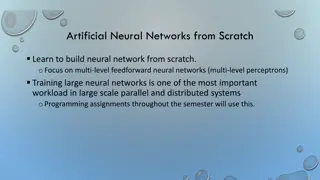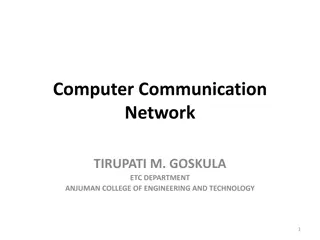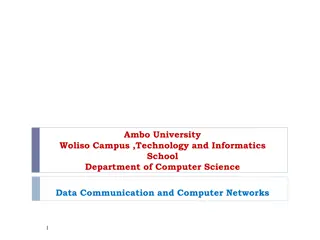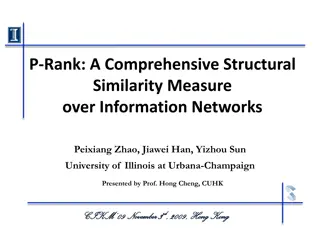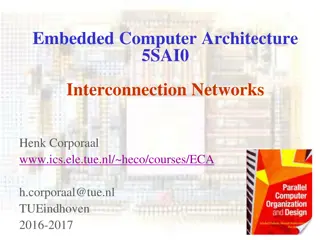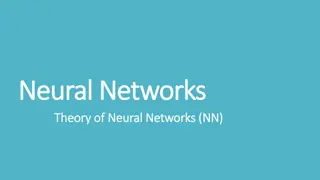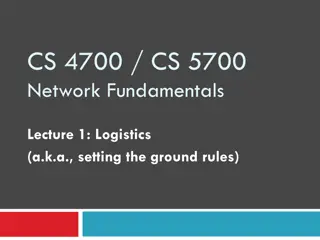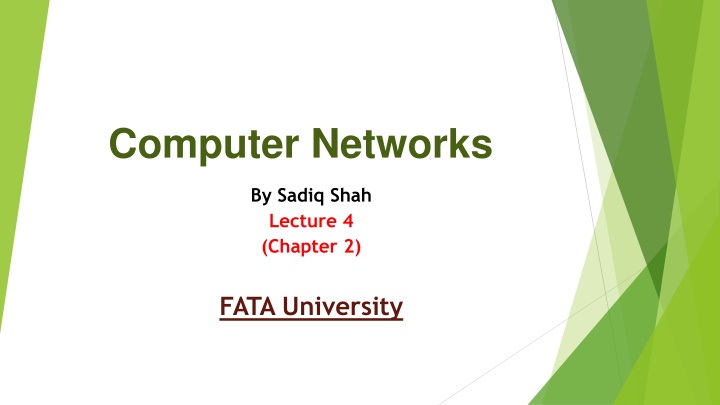
Understanding Protocol Layering in Computer Networks
Explore the concept of protocol layering in computer networks, where protocols define rules for effective communication. Learn how layering simplifies complex tasks, enables modularity, and about the TCP/IP protocol suite. Discover the advantages and scenarios illustrating the importance of protocol layering.
Download Presentation

Please find below an Image/Link to download the presentation.
The content on the website is provided AS IS for your information and personal use only. It may not be sold, licensed, or shared on other websites without obtaining consent from the author. If you encounter any issues during the download, it is possible that the publisher has removed the file from their server.
You are allowed to download the files provided on this website for personal or commercial use, subject to the condition that they are used lawfully. All files are the property of their respective owners.
The content on the website is provided AS IS for your information and personal use only. It may not be sold, licensed, or shared on other websites without obtaining consent from the author.
E N D
Presentation Transcript
Computer Networks By Sadiq Shah Lecture 4 (Chapter 2) FATA University
PROTOCOL LAYERING In data communication and networking, a protocol defines the rules that both the sender and receiver and all intermediate devices need to follow to be able to communicate effectively. When communication is simple, we may need only one simple protocol; when the communication is complex, we may need to divide the task between different layers, in which case we need a protocol at each layer, or protocol layering.
First Scenario Assume Maria and Ann are neighbors with a lot of common ideas. Communication between Maria and Ann takes place in one layer, face to face, in the same language
Second Scenario We assume that Ann is offered a higher-level position in her company, but needs to move to another branch located in a city very far from Maria. Both want to start a new business Now a hidden and secret communication is needed from intruder They agree on an encryption/decryption technique. The sender of the letter encrypts it to make it unreadable by an intruder; the receiver of the letter decrypts it to get the original letter.
Advantages of Layering Protocol layering enables us to divide a complex task into several smaller and simpler Tasks It allows us to separate the services from the implementation. A layer needs to be able to receive a set of services from the lower layer and to give the services to the upper layer; we don t care about how the layer is implemented. Another advantage is that there are intermediate systems that need only some layers, but not all layers. If we did not use protocol layering, we would have to make each intermediate system as complex as the end systems
TCP/IP PROTOCOL SUITE TCP/IP is a protocol suite (a set of protocols organized in different layers) used in the Internet today. It is a hierarchical protocol made up of interactive modules, each of which provides a specific functionality The term hierarchical means that each upper level protocol is supported by the services provided by one or more lower level protocols. Today, however, TCP/IP is thought of as a five-layer model.
Layers in the TCP/IP Protocol Suite Functions and duties of layers in the TCP/IP protocol suite To better understand the duties of each layer, we need to think about the logical connections between layers



